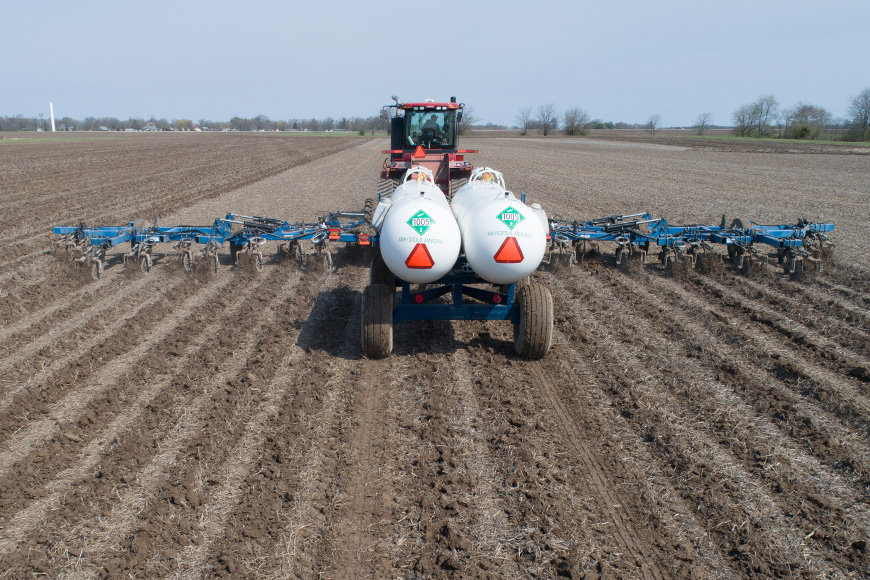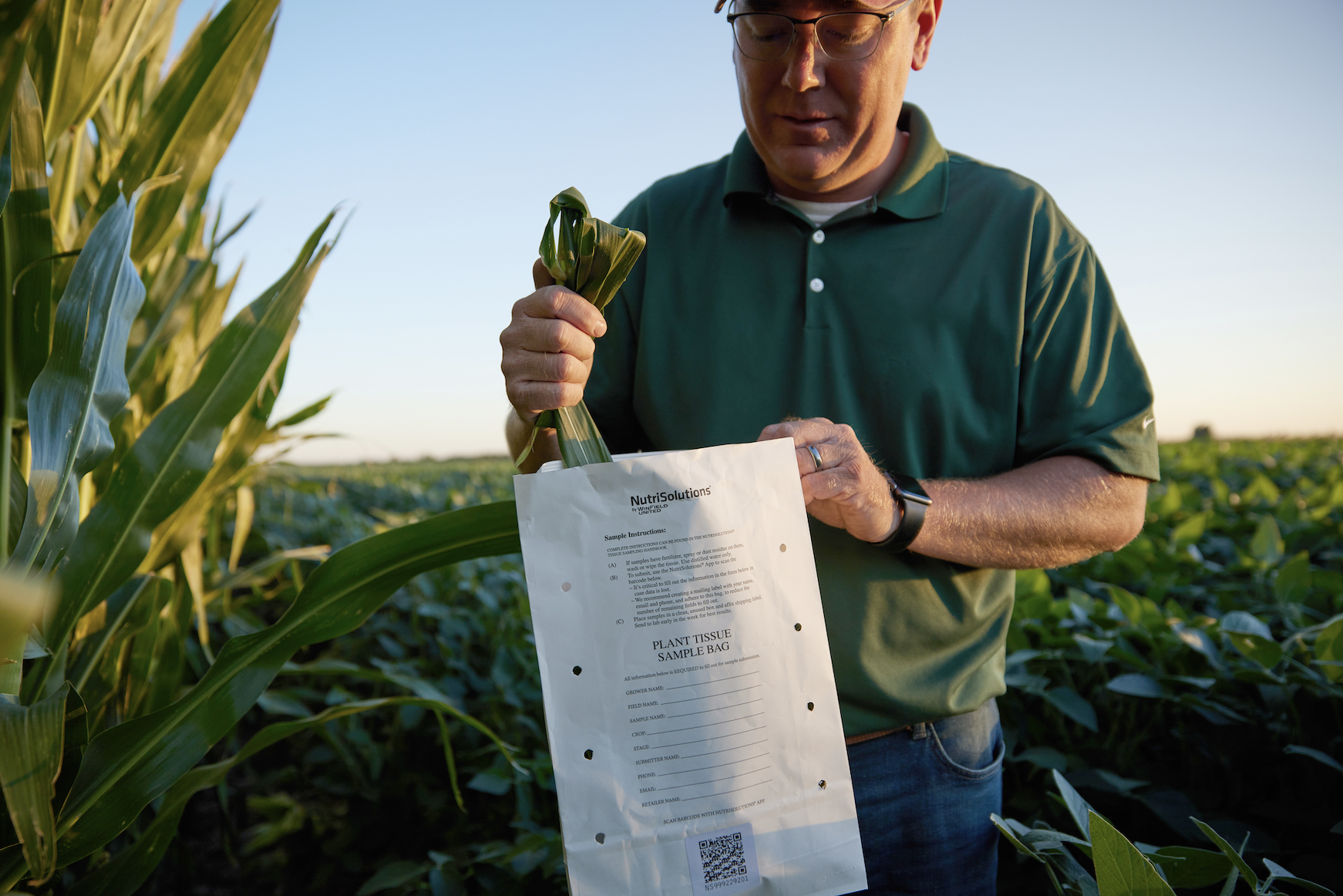3 Tips For Nitrogen Management in Corn

Corn is a notoriously nitrogen-hungry crop. It’s an essential component of plant proteins, enzymes and chlorophyl, playing a vital role in many biological processes. Nitrogen is required in larger quantities than any other nutrient and is the most frequently deficient in corn. So clearly, getting nitrogen right is key in maximizing plant productivity and the success of your CROPLAN® corn products.
In my experience, I find that many growers establish their nitrogen routine and stick with it year after year. But it’s important to continuously evaluate your nitrogen program to ensure you're doing what’s best for your crop and your bottom line. These are a few of my top tips for growers looking to refine their nitrogen approach.
Every CROPLAN hybrid has a response-to nitrogen (RTN) score, which is defined by rigorous testing in our Answer Plot® system to help growers better manage their inputs. If a product has a high RTN, it will respond to higher N rates. If it is low RTN, higher N rates may not have as much of an impact.
One of the most common mistakes I see is over-application of nitrogen for fear of yield loss. But like in economics, nitrogen can hit a point of diminishing returns where you’ve now applied more than is necessary and yield gain has stopped, but you’re still paying for the extra product. Understanding your hybrid’s RTN score will help you dial in your nitrogen rates to better protect your bottom line from wasted expenses.
Once your fields are harvested, it’s a great idea to take soil samples or review previous samples and evaluate the results alongside this season’s yield maps. Soil tests will identify any deficiencies, while yield maps will show the amount of nutrients removed by this season’s crop. Together, this information will help you plan the crop nutrient amounts needed for next season based on actual numbers rather than estimations.
When it comes to tissue testing, it’s important to know what you’re looking for. Nitrogen is highly variable in-season. It’s like a hungry teenager by the time it reaches late vegetative stages, using half its N supply between V8 and VT alone, so it’s almost always going to show hunger for N.
The most valuable information you can get from tissue samples are nitrogen to sulfur (N:S) and nitrogen to potassium (N:K) ratios. For a plant to convert nitrogen to protein in the plant, it needs adequate sulfur. For high-yielding crops, a 10:1 ratio of nitrogen to sulfur is ideal.
Potassium helps carry nitrogen to the plant’s growing point. Without an adequate N:K ratio, plants can’t optimize kernel depth and yield. Our research shows that when N:K ratios are above 1.7:1, sidedressed potassium can be beneficial. If ratios are below 1.3:1, more nitrogen may help improve yield potential.
Your local CROPLAN retailer is well equipped to help you coordinate and apply these tests to ensure a more profitable return on your seed investment.
That said, you must know what you’re applying. Not all nitrogen stabilizers are created equally. N-Serve® and Instinct®, for example, have been around the block more than a few times and have data to back them up. Across 453 trials over six years, there was an average 8.9 bushel per acre yield increase when Instinct and N-Serve were applied to corn.1
Always be sure to read the label, look for trusted chemistries and get your retailer’s expert opinion when choosing nitrogen stabilizers.
Your CROPLAN retailer’s knowledge doesn’t start and end with seed. They are a valuable resource you can turn to for setting full-acre plans from plant nutrition to crop protection. Find your local retailer and dig further into nitrogen planning.
1 Based on Verdesian Life Sciences and Dow AgroSciences data on file.
All photos are either the property of WinField United or used with permission.
© 2024 WinField United. Important: Before use always read and follow label instructions. Crop performance is dependent on several factors many of which are beyond the control of WinField United, including without limitation, soil type, pest pressures, agronomic practices and weather conditions. Growers are encouraged to consider data from multiple locations, over multiple years and to be mindful of how such agronomic conditions could impact results. Answer Plot, CROPLAN and WinField are trademarks of WinField United. All other trademarks are the property of their respective owners.
In my experience, I find that many growers establish their nitrogen routine and stick with it year after year. But it’s important to continuously evaluate your nitrogen program to ensure you're doing what’s best for your crop and your bottom line. These are a few of my top tips for growers looking to refine their nitrogen approach.
1. Match The Program To The Product
In many corn-growing regions, nitrogen is applied right after harvest in the fall. Operationally, this makes sense. But have you chosen your corn product at this time? It’s important to understand which CROPLAN hybrid you plan to plant in which field so you can tailor the nitrogen rate to the product.Every CROPLAN hybrid has a response-to nitrogen (RTN) score, which is defined by rigorous testing in our Answer Plot® system to help growers better manage their inputs. If a product has a high RTN, it will respond to higher N rates. If it is low RTN, higher N rates may not have as much of an impact.
One of the most common mistakes I see is over-application of nitrogen for fear of yield loss. But like in economics, nitrogen can hit a point of diminishing returns where you’ve now applied more than is necessary and yield gain has stopped, but you’re still paying for the extra product. Understanding your hybrid’s RTN score will help you dial in your nitrogen rates to better protect your bottom line from wasted expenses.
2. Soil Sample and Tissue Test
Nitrogen is expensive and can be harmful to the environment when lost to denitrification and leaching. Understanding what your fields truly need by soil and tissue sampling will help you better manage your nitrogen inputs.Once your fields are harvested, it’s a great idea to take soil samples or review previous samples and evaluate the results alongside this season’s yield maps. Soil tests will identify any deficiencies, while yield maps will show the amount of nutrients removed by this season’s crop. Together, this information will help you plan the crop nutrient amounts needed for next season based on actual numbers rather than estimations.
When it comes to tissue testing, it’s important to know what you’re looking for. Nitrogen is highly variable in-season. It’s like a hungry teenager by the time it reaches late vegetative stages, using half its N supply between V8 and VT alone, so it’s almost always going to show hunger for N.
The most valuable information you can get from tissue samples are nitrogen to sulfur (N:S) and nitrogen to potassium (N:K) ratios. For a plant to convert nitrogen to protein in the plant, it needs adequate sulfur. For high-yielding crops, a 10:1 ratio of nitrogen to sulfur is ideal.
Potassium helps carry nitrogen to the plant’s growing point. Without an adequate N:K ratio, plants can’t optimize kernel depth and yield. Our research shows that when N:K ratios are above 1.7:1, sidedressed potassium can be beneficial. If ratios are below 1.3:1, more nitrogen may help improve yield potential.
Your local CROPLAN retailer is well equipped to help you coordinate and apply these tests to ensure a more profitable return on your seed investment.
3. Protect Every Pound
There are several schools of thought around nitrogen stabilizers, but I recommend using them on every application you make. Nitrogen is too critical to corn production, too large of an expense and too volatile to not take that extra step. Nitrogen stabilizers limit microbial activity in the soil, reducing the conversion of ammonium into nitrate, which keeps nitrogen in a form that is less susceptible to loss by leaching or denitrification.That said, you must know what you’re applying. Not all nitrogen stabilizers are created equally. N-Serve® and Instinct®, for example, have been around the block more than a few times and have data to back them up. Across 453 trials over six years, there was an average 8.9 bushel per acre yield increase when Instinct and N-Serve were applied to corn.1
Always be sure to read the label, look for trusted chemistries and get your retailer’s expert opinion when choosing nitrogen stabilizers.
Your CROPLAN retailer’s knowledge doesn’t start and end with seed. They are a valuable resource you can turn to for setting full-acre plans from plant nutrition to crop protection. Find your local retailer and dig further into nitrogen planning.
1 Based on Verdesian Life Sciences and Dow AgroSciences data on file.
All photos are either the property of WinField United or used with permission.
© 2024 WinField United. Important: Before use always read and follow label instructions. Crop performance is dependent on several factors many of which are beyond the control of WinField United, including without limitation, soil type, pest pressures, agronomic practices and weather conditions. Growers are encouraged to consider data from multiple locations, over multiple years and to be mindful of how such agronomic conditions could impact results. Answer Plot, CROPLAN and WinField are trademarks of WinField United. All other trademarks are the property of their respective owners.





